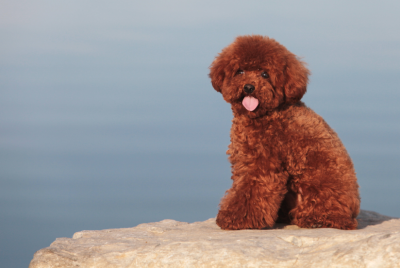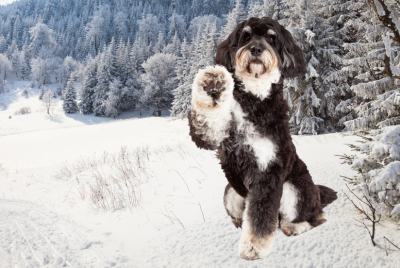How Big Do Poodles Get? A Comprehensive Guide to Poodle Sizes
Introduction
Welcome to our comprehensive guide on poodle sizes! If you’re considering getting a poodle as a pet, one of the first questions that may come to mind is, “How big do poodles get?” In this article, we’ll delve into the various sizes of poodles, from toy to standard, providing you with valuable insights to help you make an informed decision. So, let’s get started and discover the world of poodle sizes!
How Big Do Poodles Get?
Poodles come in different sizes: toy, miniature, and standard. Each size has its own unique characteristics and size ranges.
Toy Poodles
Toy poodles are the smallest of the three sizes, typically weighing between 4 to 6 pounds (1.8 to 2.7 kilograms) and standing around 10 inches (25 centimeters) tall at the shoulder. Despite their small size, toy poodles are known for their intelligence, lively personality, and affectionate nature. They make wonderful companions for individuals or families living in apartments or small houses.
Miniature Poodles
Next up, we have miniature poodles. As the name suggests, they are slightly larger than toy poodles but still smaller than standard poodles. Miniature poodles usually weigh between 10 to 15 pounds (4.5 to 6.8 kilograms) and stand approximately 11 to 15 inches (28 to 38 centimeters) tall at the shoulder. They are energetic, friendly, and highly trainable. Due to their moderate size, they can adapt well to various living environments, making them a popular choice for families and individuals alike.
Standard Poodles
The largest size category of poodles is the standard poodle. Standard poodles are elegant, intelligent, and often regarded as the most versatile of the three sizes. They typically weigh between 45 to 70 pounds (20 to 32 kilograms) and have a height of 15 inches (38 centimeters) or more at the shoulder. Standard poodles are well-suited for families with spacious homes or those who enjoy outdoor activities such as hiking or running. Their athleticism and trainability make them excel in various dog sports, including agility and obedience competitions.
Factors Affecting Poodle Size
While the general size ranges mentioned above provide a good guideline, it’s important to note that individual poodles may vary within their respective size categories. Several factors can influence a poodle’s size:
Genetics
Genetics play a significant role in determining a poodle’s size. Poodles bred from smaller parents are more likely to be smaller themselves, while those from larger parents are more likely to be larger. Responsible breeders carefully select parents with appropriate sizes to maintain the desired size range in their poodle litters.
Nutrition and Health
Proper nutrition and healthcare also contribute to a poodle’s growth and development. Providing a balanced diet and regular veterinary care can help ensure that a poodle reaches its full potential size. Neglecting these aspects may result in stunted growth or other health issues.
Gender
In most cases, male poodles tend to be slightly larger than females within the same size category. However, individual variations can still occur, so it’s essential to consider the specific poodle rather than relying solely on gender when determining its potential size.
Frequently Asked Questions
Q: Can poodles grow taller than the average size for their category?
A: Yes, while poodles generally fall within the size ranges mentioned earlier, there can be exceptions. Some toy poodles may exceed 6 pounds (2.7 kilograms), and some standard poodles may stand taller than 15 inches (38 centimeters). It’s essential to remember that these are general guidelines, and individual poodles may vary.
Q: Are there any health concerns associated with poodle sizes?
A: Poodle sizes themselves do not necessarily determine health concerns. However, larger poodles may be more prone to certain conditions such as hip dysplasia, while smaller poodles may be more susceptible to dental issues. Regular veterinary check-ups and proper care can help prevent or manage these concerns.
Q: Can I determine the size of a poodle puppy when it’s born?
A: No, the size of a poodle puppy at birth does not guarantee its final size as an adult. Puppies grow and develop over time, and their adult size becomes more apparent as they mature. It’s important to consider the size of the puppy’s parents and consult with a reputable breeder to get a better idea of the potential size range.
Q: Are there any size-specific training or care requirements for poodles?
A: While poodles of different sizes share many similarities in terms of care and training, there may be some specific considerations. For example, larger poodles may require more exercise and space, while smaller poodles might benefit from dental care tailored to their size. Consulting with a veterinarian and professional dog trainer can help you provide the best care and training for your poodle, regardless of its size.
Q: Can poodles change size over time?
A: Once a poodle reaches adulthood, its size is generally set. However, factors like weight gain or loss, muscle development, and aging can affect the appearance of a poodle’s size. It’s important to monitor your poodle’s weight and overall health to ensure they stay within a healthy range.
Q: Are there any other poodle sizes apart from toy, miniature, and standard?
A: While toy, miniature, and standard are the most recognized and commonly seen poodle sizes, some breeders may advertise other size variations, such as teacup or moyen poodles. It’s important to note that these unofficial size categories may not have standardized definitions, and caution should be exercised when considering these terms.
Conclusion
In conclusion, poodles come in different sizes, ranging from toy to standard. Understanding the size variations within the breed is crucial when deciding which poodle is the right fit for you and your lifestyle. Remember that while there are general size ranges for each category, individual poodles may deviate from these norms. Factors such as genetics, nutrition, health, and gender can influence a poodle’s size. If you’re unsure about a poodle’s potential size, consult with a reputable breeder who can provide guidance based on their experience and knowledge. By considering all these factors, you’ll be well-prepared to welcome a poodle of the perfect size into your home and create a lasting bond with your new furry friend.




